
Graph of specific heat at constant volume for a monatomic gas is
A.)
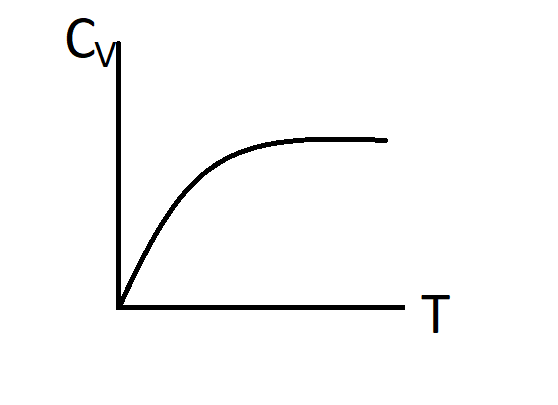
B.)
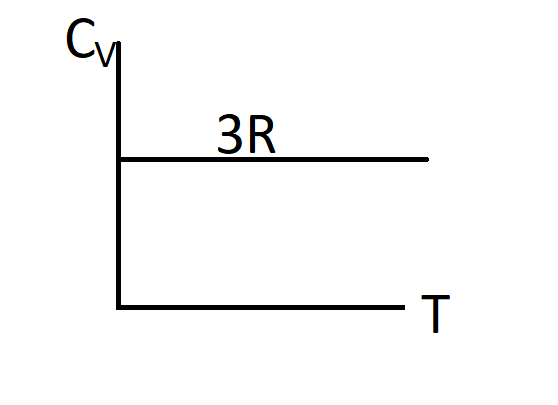
C.)
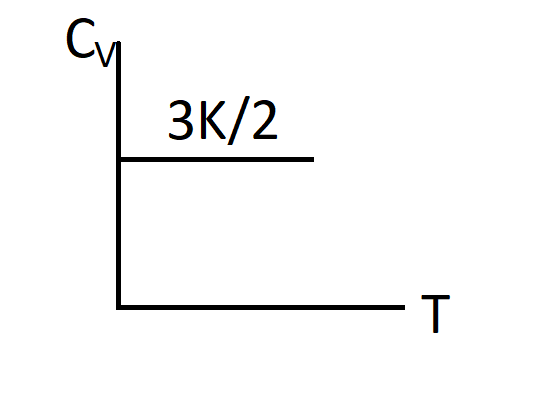
D.)
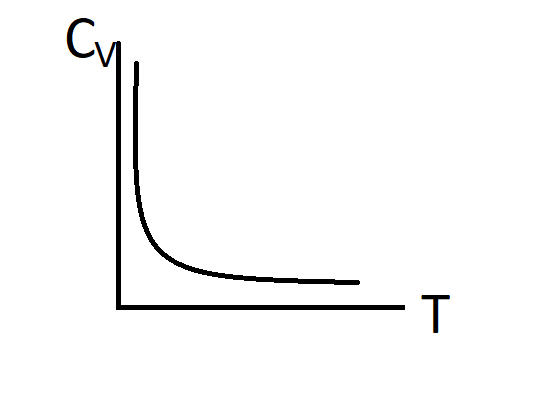




Answer
566.1k+ views
Hint: The basic thermal ability of the substance is the thermal ability of the sample of the substance divided by the mass of the sample. Informally, it is the amount of energy that must be applied, in the form of heat, to one unit of mass of the material in order to induce a temperature rise of one unit. Monatomic gas is one of which atoms are not bound together. Examples of normal conditions include noble gases argon, krypton, and xenon, but all chemical elements would be monatomic in the gas phase at sufficiently high temperatures.
Complete answer:
Specific heat is a physical volume
It is essentially known as the great quantity needed to increase the temperature by ${{1}^{o}}$ .
They are degraded by c.
Relevant heat is provided by Cv at constant volume.
The system involving constant volume is referred to as the Isochoric mechanism.
Ice has a specific heat smaller than that of water. Monatomic means a single atomic atom that does not bind gases to each other.
For an ideal gas,
$Cv=\dfrac{f}{2}K$
Where f is the total number of degrees of freedom.
For an ideal monatomic gas, three translational degrees of freedom exist in the three directions. No rotational degree of freedom exists.
Thus, $Cv=\dfrac{3}{2}K$
Which is an independent temperature.
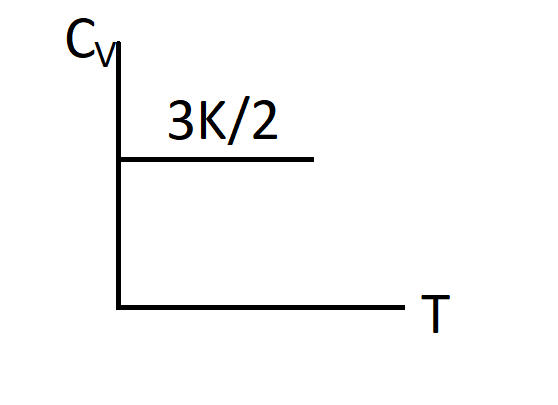
So, the correct answer is “Option C”.
Note:
The Scottish scientist Joseph Black, in the 18th century, found that equal masses of different substances required different quantities of heat to be increased through the same temperature interval, and, on this discovery, he based the principle of particular heat.
Complete answer:
Specific heat is a physical volume
It is essentially known as the great quantity needed to increase the temperature by ${{1}^{o}}$ .
They are degraded by c.
Relevant heat is provided by Cv at constant volume.
The system involving constant volume is referred to as the Isochoric mechanism.
Ice has a specific heat smaller than that of water. Monatomic means a single atomic atom that does not bind gases to each other.
For an ideal gas,
$Cv=\dfrac{f}{2}K$
Where f is the total number of degrees of freedom.
For an ideal monatomic gas, three translational degrees of freedom exist in the three directions. No rotational degree of freedom exists.
Thus, $Cv=\dfrac{3}{2}K$
Which is an independent temperature.

So, the correct answer is “Option C”.
Note:
The Scottish scientist Joseph Black, in the 18th century, found that equal masses of different substances required different quantities of heat to be increased through the same temperature interval, and, on this discovery, he based the principle of particular heat.
Recently Updated Pages
Why are manures considered better than fertilizers class 11 biology CBSE

Find the coordinates of the midpoint of the line segment class 11 maths CBSE

Distinguish between static friction limiting friction class 11 physics CBSE

The Chairman of the constituent Assembly was A Jawaharlal class 11 social science CBSE

The first National Commission on Labour NCL submitted class 11 social science CBSE

Number of all subshell of n + l 7 is A 4 B 5 C 6 D class 11 chemistry CBSE

Trending doubts
What is meant by exothermic and endothermic reactions class 11 chemistry CBSE

10 examples of friction in our daily life

One Metric ton is equal to kg A 10000 B 1000 C 100 class 11 physics CBSE

1 Quintal is equal to a 110 kg b 10 kg c 100kg d 1000 class 11 physics CBSE

Difference Between Prokaryotic Cells and Eukaryotic Cells

What are Quantum numbers Explain the quantum number class 11 chemistry CBSE




